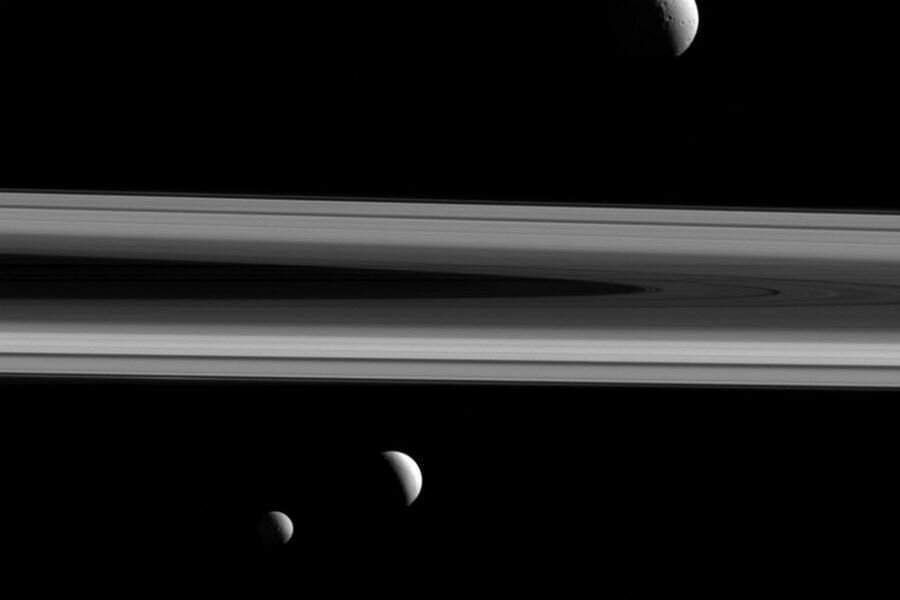NASA's Cassini spacecraft takes first-ever plunge into Saturn's rings
Loading...
As Cassini's final year of observations around Saturn winds down, NASA's groundbreaking probe took its first dive through Saturn's rings at 8:09 a.m. Eastern time on Sunday.
The orbit was the closest any probe has ever gotten to Saturn's F ring, the outermost of the planet's prominent ring system.
Cassini is expected to make another 19 ring-skimming orbits in its penultimate phase, studying and mapping Saturn's rings in unprecedented detail over the next four months before breaking off to begin the final phase of its mission: exploring the space between Saturn and its rings. The 20-year-old probe will then end its life by crashing into the planet, ending the most significant study of the sixth planet in human history.
The "ring-grazing phase" of Cassini's mission began on November 30th, when the probe used a gravitational nudge from Titan to shift its orbit towards Saturn's F ring. On Sunday, as the probe approached the ring itself, Cassini made one final 6-second burn before closing its engine cover to protect against damage from the dust and other debris that make up the F ring.
The probe passed through the ring at a distance of only 57,000 miles (91,000 kilometers) above Saturn's cloud tops.
"It's taken years of planning, but now that we're finally here, the whole Cassini team is excited to begin studying the data that come from these ring-grazing orbits," said Linda Spilker, Cassini project scientist at NASA's Jet Propulsion Laboratory, in a statement. "This is a remarkable time in what's already been a thrilling journey."
The probe conducted extensive scans of the rings to help researchers analyze their structure and origin. Upcoming orbits will take photos, perform different kinds of scans, and even try to directly sample particles from the ring itself, according to NASA.
These ring-grazing orbits are also helping the Cassini team prepare for the even tougher maneuvers that will come after this phase of the mission ends on April 22.
After that, the probe will buzz past Titan to pick up one last burst of data from the moon.
"We're going to do a radar pass looking straight down to map the composition of some of the [methane] lakes as well as sea," Jonathan Lunine, a Cassini mission scientist and a Cornell astronomy professor, told Space.com.
"We're going to look for changes in the lakes and the seas with radar. We're going to measure the elevation of some of these small lakes, because some of them are perched higher or lower. And we're actually as well going to taste the atmosphere with the mass spectrometer. So this is like the final party where you want to do it all."
After that, Cassini, low on fuel, is scheduled to enter the "Grand Finale Orbits," passing between the planet and its rings for some of the closest views of Saturn yet before falling into the planet's atmosphere to end its historic career with a bang.
While that final plunge won't happen until September 15, Cassini has begun wrapping up its extraordinary run. Sunday night's main-engine burn was "the 183rd and last currently planned firing of our main engine," said Earl Maize, Cassini project manager, in a statement from NASA's Jet Propulsion Laboratory.
"Although we could still decide to use the engine again, the plan is to complete the remaining maneuvers using thrusters," he added.
The next pass through Saturn's rings is scheduled for December 11.








